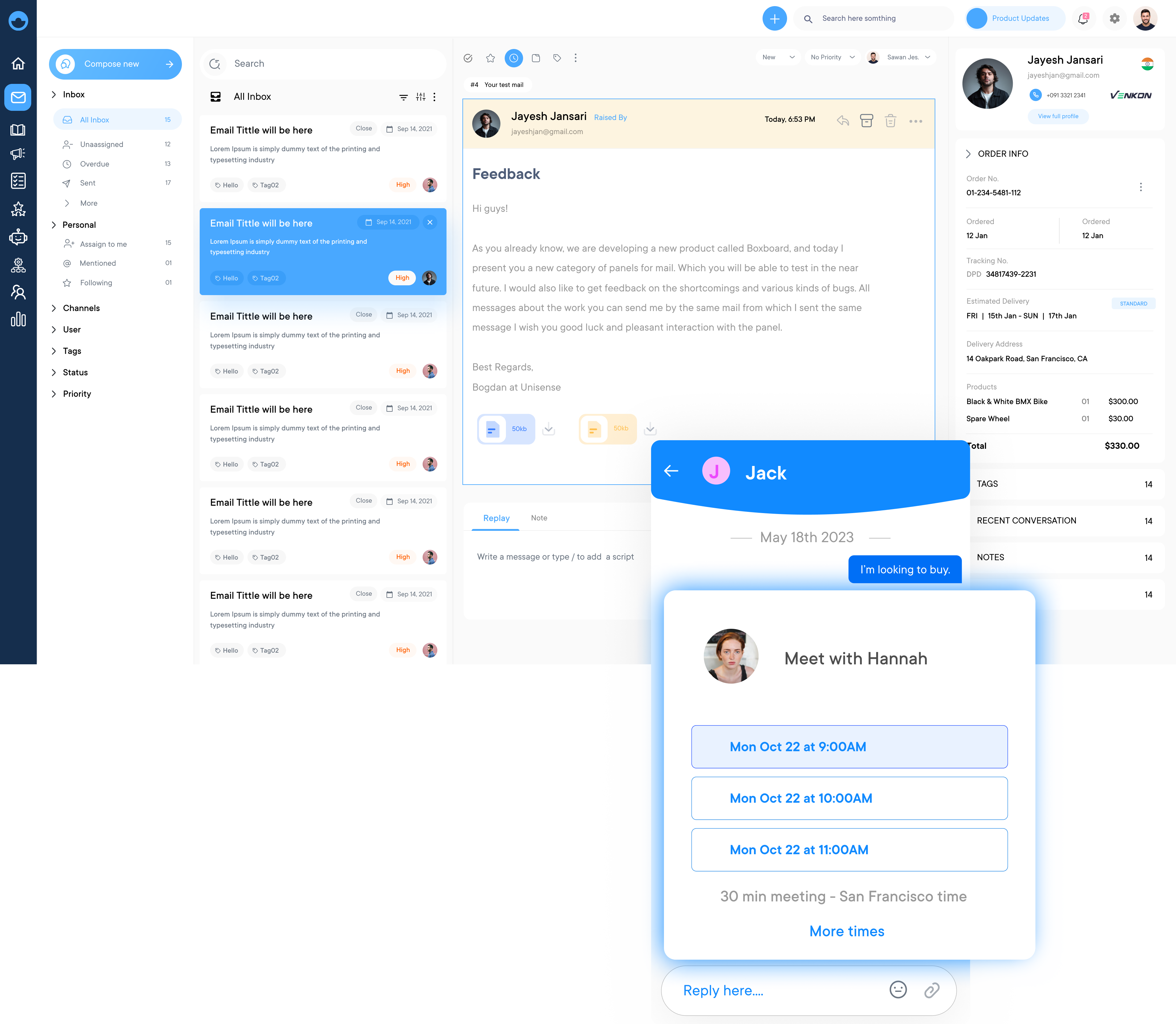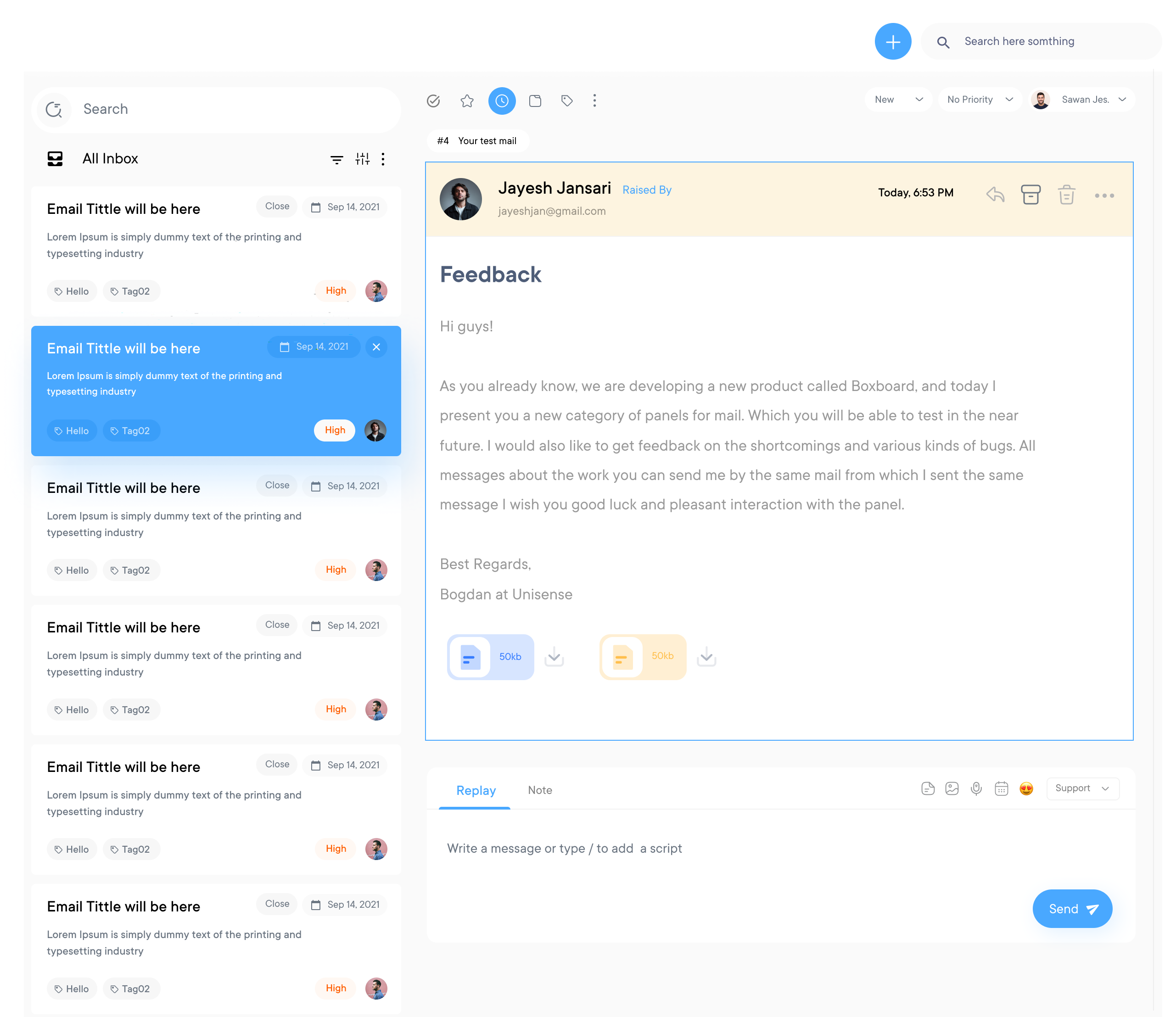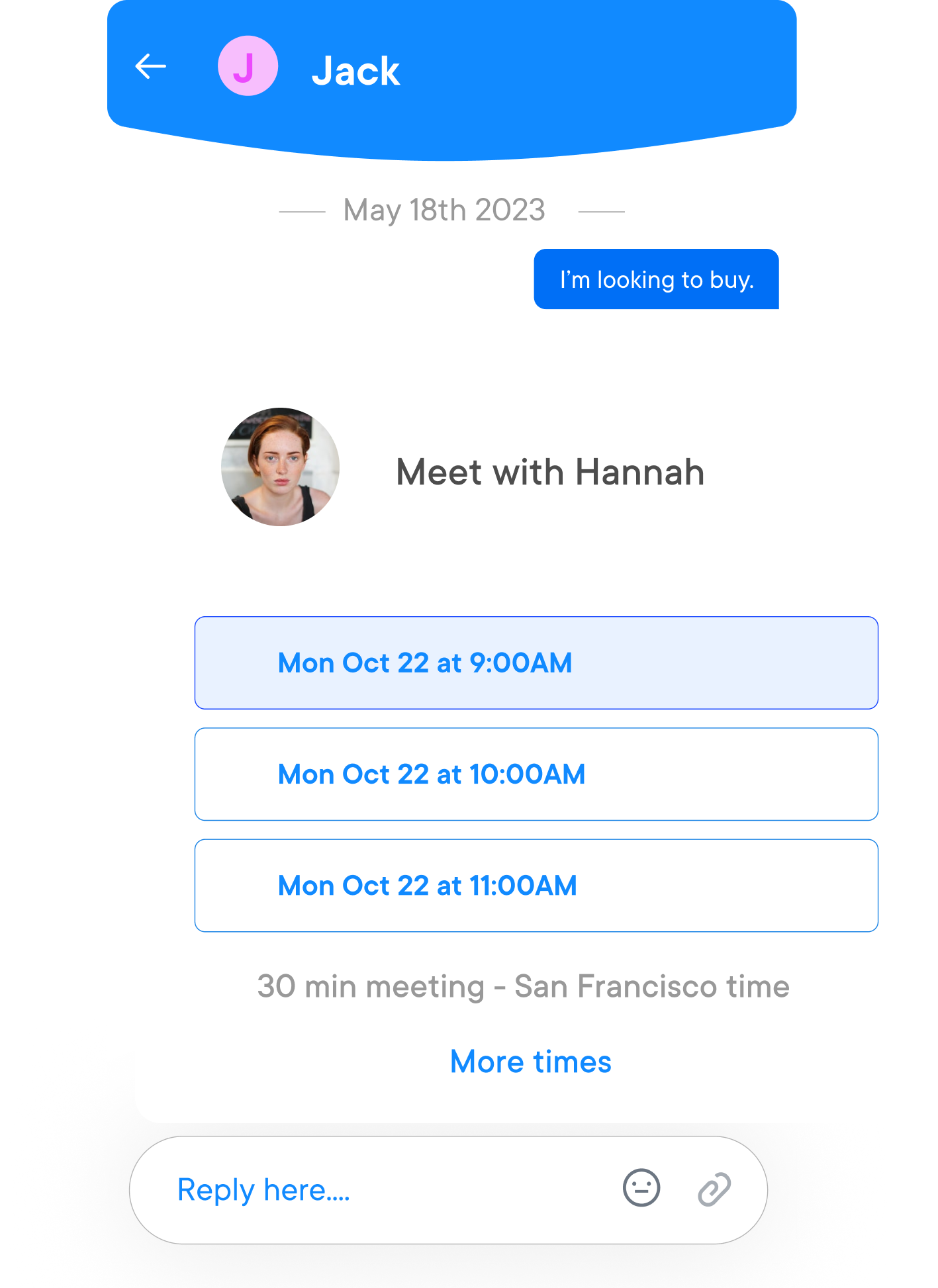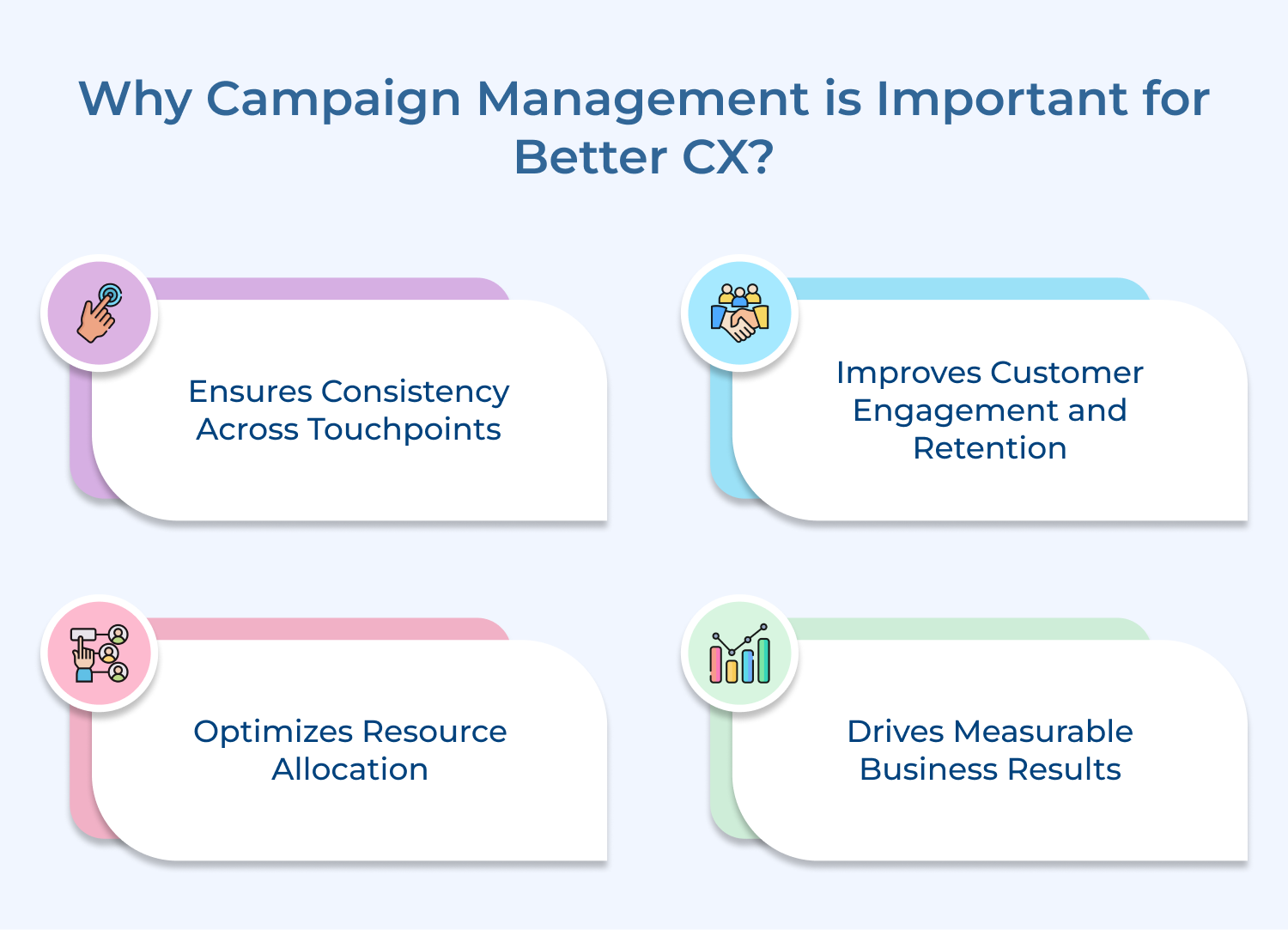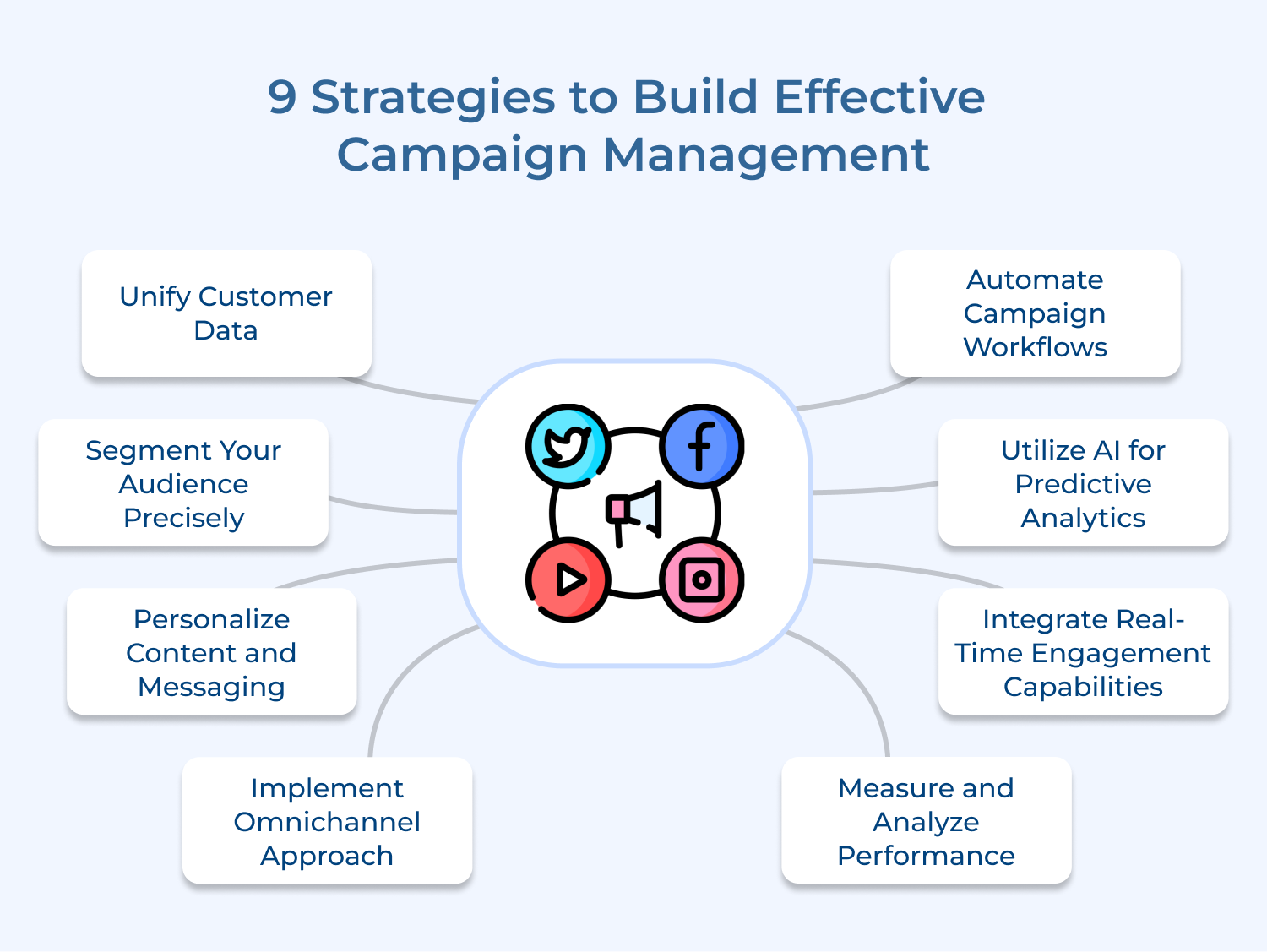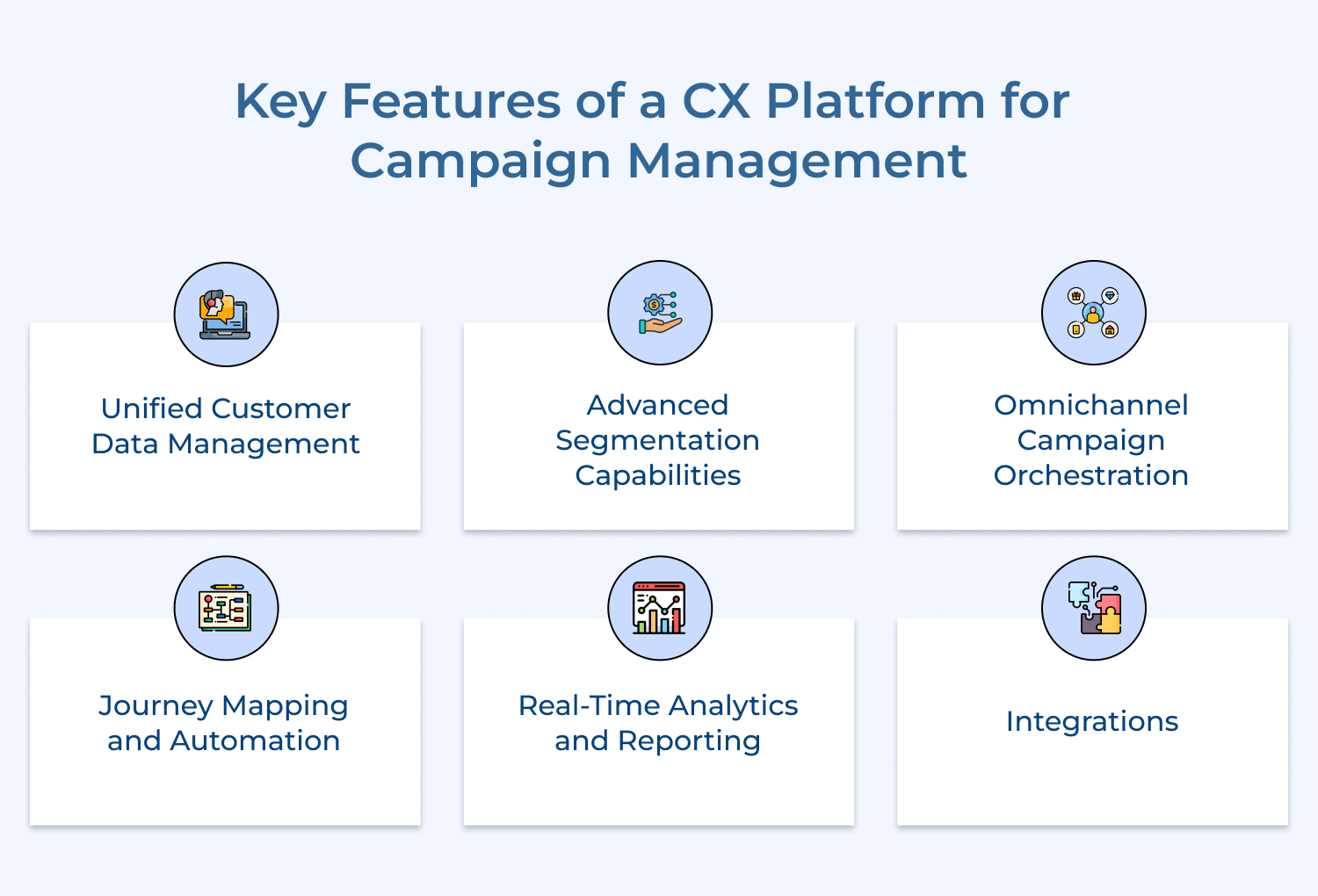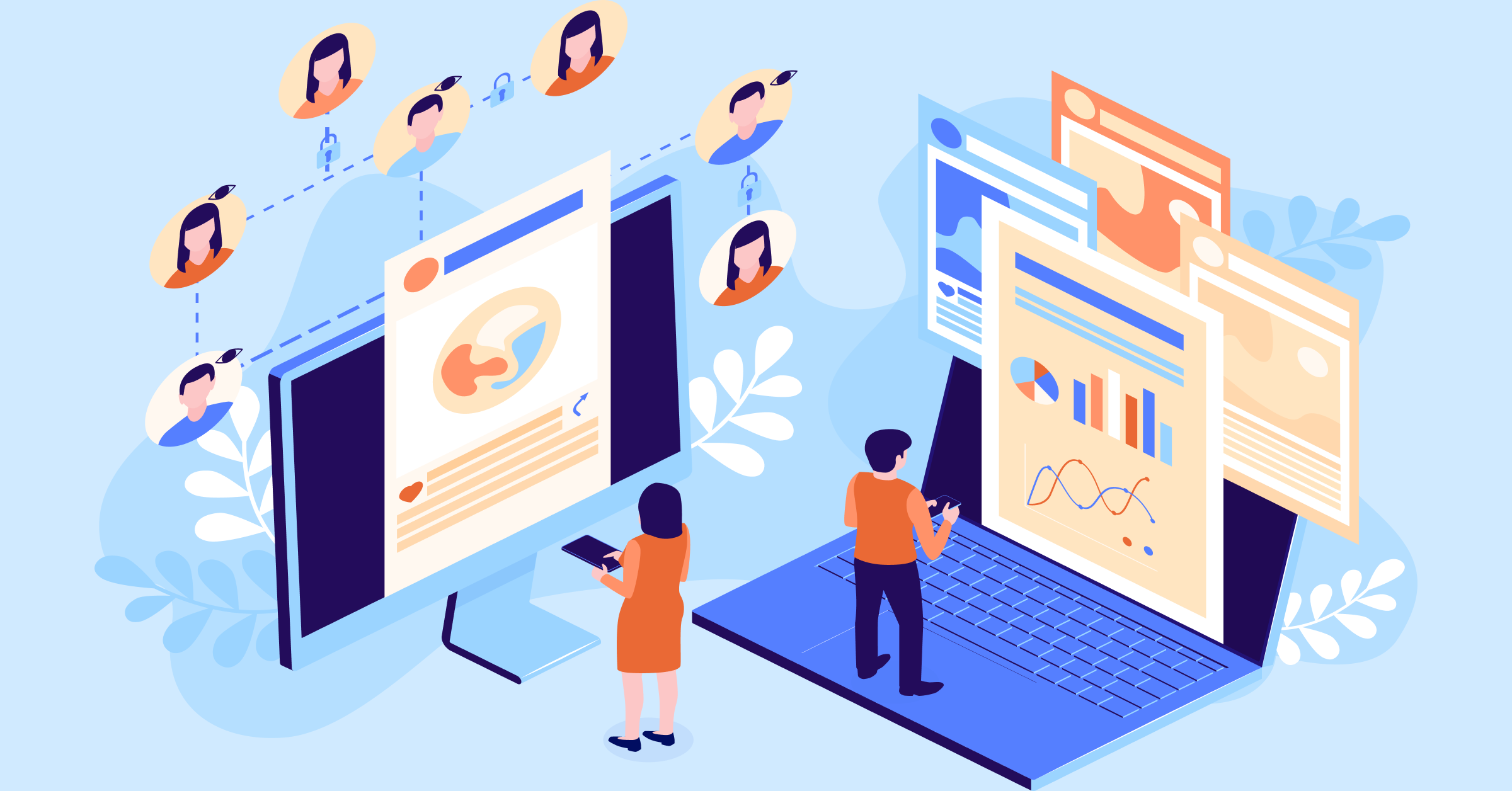1. Unify Customer Data
Unifying customer data is essential for creating a comprehensive view of each customer. It eliminates data silos, reduces redundancies and ensures that all customer interactions as well as touchpoints are considered when designing/executing campaigns.
Use the unified data to create detailed customer profiles, understand customer behavior across channels and inform personalized campaign strategies. The holistic view enables more targeted and effective campaigns that resonate with customers.
Best practices:
- Implement a robust data governance strategy to ensure data quality, consistency and compliance across all sources.
- Utilize API integrations and ETL (Extract, Transform, Load) processes to consolidate data from various systems into your CX platform seamlessly.
2. Segment Your Audience Precisely
Precise audience segmentation allows for more targeted and relevant campaigns. It helps in delivering the right message to the right audience, improving campaign effectiveness and resource allocation.
Leverage the CX platform’s segmentation tools to create dynamic segments based on demographics, behavior, purchase history and engagement levels. Use these segments to tailor campaign content, timing, as well as channel selection.
Best practices:
- Regularly update your segmentation criteria to ensure they remain relevant and effective as customer behaviors evolve.
- Implement progressive profiling to continually refine segments based on new data and interactions.
3. Personalize Content and Messaging
Personalization enhances customer engagement by delivering relevant, timely content that resonates with individual preferences and needs. It improves campaign performance and customer satisfaction.
Utilize the CX platform’s personalization engines to dynamically adjust content, offers and messaging based on individual customer data as well as behavior patterns. Implement personalization across all customer touchpoints for a consistent experience.
Best practices:
- Develop a content strategy that includes modular content pieces that can be easily mixed and matched for personalization.
- Use AI-driven recommendations to automate personalization at scale, ensuring relevance even with large customer bases.
4. Implement Omnichannel Approach
Omnichannel approach ensures a consistent and seamless customer experience across all channels. It prevents disjointed communications and enhances the overall effectiveness of your campaigns.
Leverage the CX platform like Omni24 to orchestrate campaigns across multiple channels, ensuring message consistency and optimal timing. Use cross-channel data to create cohesive customer journeys that adapt based on individual interactions.
Best practices:
- Map out customer journeys across channels to identify key touchpoints and ensure smooth transitions between them.
- Implement real-time decision-making capabilities to adjust channel strategies based on customer preferences and behaviors.
5. Automate Campaign Workflows
Automation streamlines campaign execution, reduces manual errors, and allows for more complex, responsive campaign strategies. It frees up marketing teams to focus on strategy and creativity rather than repetitive tasks.
CX platform’s workflow automation tools help you to create trigger-based campaigns, automate follow-ups and manage multi-step customer journeys. Implement rules-based automation to handle routine tasks and decision points within campaigns.
Best practices:
- Start with simple automation workflows and gradually increase complexity as you gain experience as well as confidence in the system.
- Regularly review as well as optimize automated workflows to ensure they remain aligned with business objectives and customer needs.
6. Utilize AI for Predictive Analytics
Predictive analytics powered by AI helps anticipate customer needs, identify trends and optimize campaign timing. It enables proactive rather than reactive campaign strategies.
Leverage AI capabilities within the CX platform to predict customer behavior, identify propensity to purchase and forecast campaign performance. Use these insights to inform campaign design, timing and personalization strategies.
Best practices:
- Ensure you have a sufficient volume and quality of historical data to train AI models effectively.
- Continuously validate and refine AI predictions against actual results to improve accuracy over time.
7. Integrate Real-Time Engagement Capabilities
Real-time engagement allows for immediate response to customer actions and behaviors, creating more relevant as well as timely interactions. It significantly enhances the customer experience and campaign effectiveness.
Implement real-time triggers within your CX platform to respond instantly to customer actions such as website visits, abandoned carts, or service inquiries. Use these capabilities to deliver contextually relevant messages or offers in the moment.
Best practices:
- Define clear rules and thresholds for real-time engagement to avoid overwhelming customers with too many interactions.
- Test and optimize real-time engagement strategies regularly to ensure they’re adding value to the customer experience.
8. Measure and Analyze Performance
Comprehensive measurement as well as analysis are crucial for understanding campaign effectiveness, ROI and areas for improvement. It provides the insights needed to refine strategies and justify marketing investments.
The analytics tools of CX platform will help in tracking key performance indicators (KPIs) across all campaigns and channels. Use these insights to generate reports, identify trends and make data-driven decisions for future campaigns.
Best practices:
- Define clear, measurable objectives for each campaign and align KPIs with these objectives as well as overall business goals.
- Implement a regular reporting cadence and review process to ensure insights are acted upon in a timely manner.
